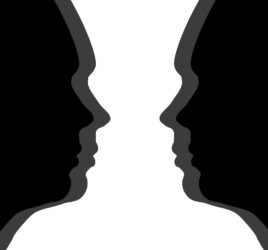
Experience-based learning – How dance, science, and education come together
A few years ago, an unlikely collaboration between social psychologists from the University of Groningen and choreographers from Random Collision began. Understandably, you might wonder why choreographers and social scientists would want to. It all started when we discovered a shared interest in the social impact of dance: “How do dancers move their audiences?” “When do passive viewers become involved?” Together we set up a research project to investigate these questions. During two large-scale field experiments at the Noorderzon Performing Arts Festival, we not only gained scientific insights in the ways in which audiences connect to performers on stage, we also learned that dance is an immensely useful tool to explore group dynamics. We realized this was interesting not just for our own research, but that we could use dance and movement to teach students about group dynamics. That is to say, by allowing students to enact and explore group dynamics together with a professional choreographer they could learn about social psychological theories by experiencing them. Learning through experience can be more powerful than listening to a lecture or reading a book. It is interesting therefore that in academia it is unusual to learn non-verbally through movement and dance, though it can offer new understandings and insights for students. For instance, questions about leadership, conformity, and intergroup processes lend themselves very well to be explored through movement. In this way, interactions through dance and movement create a whole different ‘social playing field’ in which students get to know each other and themselves in a different way than sitting together in a classroom. Experience-based learning and working non-verbally provides the benefit of taking students out of their comfort zone and it encourages more intuitive behavior. Moreover, they experience the implications of their actions and realise that what one does affects social interaction as much or even more than what one says.
We use this experience-based learning to design classes that bridge the gap between theory and practice by letting students experience how social psychological theories work in practice.
Learning through experience can be more powerful than listening to a lecture or reading a book
Experience-based learning
In our classes, the choreographer typically starts with movement exercises focussed on body and spatial awareness, and after that we begin exploring social interactions and group dynamics. An example of a group exercise is “flocking”; in this exercise people copy one another’s behaviour, with the person in the front being the leader. In this exercise students practice with leader- and followership, but also experience how social identities can emerge through synchronized behaviour. All the exercises are based on improvisation, so participants need no prior dance experience. The psychologists provide the theoretical framework throughout the class. In our experience, the active engagement, the exchange of experiences among students, and the translation of the cognitive to the physical and vice versa facilitate learning. One of our students commented: ‘Instead of listening and having some ideas about theories and methods, you can feel it and experience it by yourself trough movement. It is astonishing how it actually works. The feeling you get during the exercises and how it fits in the experiences you have had and theories you have heard earlier. It is a nice way to make points clear and show how it works.’
The physical experience of these concepts through movement offer an innovative way of learning; providing students with skills to build relations between theory and practice. The outcomes are threefold: First, learning via embodiment benefits students’ understanding of theory. Second, the cross-disciplinary approach allows students to apply their theoretical knowledge more flexibly, preparing them for a range of professional fields. Third, the masterclass can be enriching on an (inter)personal level. Students who participated in our classes reported learning about themselves and their position in the group by engaging in exercises in which trust, responsibility, and interpersonal sensitivity are key elements. As one of the students put it: “During the first session there were certain situations in which I was not comfortable in taking the lead, however, this changed in the second session as I developed more confidence and my strength to lead revealed itself”. Another student wrote:
“’What makes a good leader?’ Before the workshop, I would have said a strong personality and body language that fits with it. Afterwards I think it is more about taking on the responsibility for others, enjoying it, being kind, supporting everybody, and always focusing on the group goals instead of your individual ones”.
What we have done so far
So far, our teaching method has been included in several master programs. Firstly, a one-time 4-hour class was incorporated in the course “Managing Groups” of the psychology master program. After the successful introduction three years ago, this class became a permanent part of the course. We also designed a masterclass for the Master’s Honours programme about leadership, for which we received a Fellowship for Innovation of Teaching from the University of Groningen in 2016. We were also invited to give workshops at festivals; at EUREKA! Festival in Amsterdam, organized by the Dutch National Research Agenda, and the national dance festival Moving Futures. Furthermore, we were invited to talk about learning by movement at the Kenniscafé in Groningen. We hope that in the future, our teaching method will stay part of the curriculum at the University of Groningen and will be adopted by other educational programs in- and outside the university, so you can experience it yourself instead of reading about it!
NOTE: This post was authored by Aafke van Mourik Broekman, Namkje Koudenburg, and Kirsten Krans
Check out the short video about the Masterclass Leadership through Movement




One comment